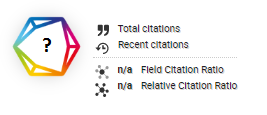Supply Chain Risk Assessment and Management for Mount Merapi Disaster Logistics Distribution
DOI:
https://doi.org/10.46984/sebatik.v29i1.2575Keywords:
House of risk, Disaster mitigation, Humanitarian supply chain; Merapi Eruption, Logistics.Abstract
Mount Merapi is predicted to have small eruptions annually and larger eruptions every 7-8 years. This necessitates preparedness from all parties to face potential eruptions so that the impacts can be minimized. One important aspect to consider is the distribution of logistical assistance. The aim of this research is to assist BPBD Sleman in completing a contingency plan for Merapi eruption disasters. The findings from this research can help anticipate issues in the logistics distribution process, ensuring it is more even and timely if an eruption occurs in the future. This study employs the House of Risk (HOR) method, which consists of two stages. In the first stage, the focus is on identifying risk causes (risk agents) and determining priorities. The second stage involves establishing treatment actions to address priority risk agents based on the analysis from the first stage. The results indicate that the risk agents with the highest scores are inappropriate data sharing, refugees moving around, rough estimates of logistics needs, insufficient warehouse capacity, and lack of work supervision. The second-stage analysis produces mitigation plans to prevent these risk agents, one of which includes using real-time applications. To prevent the emergence of the identified risks, it is necessary to develop a real-time information system that can provide updates on the number of refugees.
References
Azali, N. F., & Sabar, R. (2025). Integrating humanitarian logistics and good distribution practices (GDP) in flood disaster management: Case study in Malaysia. South Eastern European Journal of Public Health, XXVI(S1), 4527–4546. https://doi.org/10.70135/seejph.vi.4871
Badan Nasional Penanggulangan Bencana. (2021). Data dan Informasi Bencana Indonesia. http://dibi.bnpb.go.id. Diakses pada 31 Juli 2022.
Barata, Galih Kartika, Lestari, Puji, Hendariningrum, Retno. 2018. Model Komunikasi untuk Penanggulangan Bencana Gunung Merapi melalui Aplikasi Plewengan. Journal Communication Spectrum : Capturing New Perspectives in Communication Vol. 7 No. 2.
Bowo. (2010). https://republika.co.id/berita/breaking-news/nusantara/10/11/13/146556-distribusi-logistik-pengungsi-merapi-dianggap-lambat. Diakses pada tanggal 31 Januari 2022.
Costa, S. R. A. d., V. B. G. Campos, & R. A. d. M. Bandeira. (2012). Supply Chains in Humanitarian Operations: Cases and Analysis. Procedia - Social and Behavioral Sciences, vol. 54, pp. 598-607.
Gertisser, R., Troll, V. R., & Charbonnier, S. J. (2023). Merapi Volcano: Geology, Eruptive Activity, and Monitoring. Springer.
Hartama, D., Wanayumini, W., & Damanik, I. S. (2023). Optimizing disaster response: A systematic review of time-dependent cumulative vehicle routing in humanitarian logistics. Jurnal Ilmiah Teknik Elektro Komputer dan Informatika, 10(3), 29686. https://doi.org/10.26555/jiteki.v10i3.29686
Hermon, Dedi. (2015). Geografi Bencana Alam. Jakarta: PT Raja Grafindo Persada.
Hidayat, R. D. R., Deswari, M., & Suhalis, A. (2023). Logistics distribution plans during emergency response in Indonesia World Food Program. Jurnal Manajemen Bisnis Transportasi dan Logistik, 10(2), 852.
Ishomuddin. (2010). Jumlah Pengungsi Merapi mencapai 73 Ribu lebih. https://nasional.tempo.co/read/289910/jumlah-pengungsi-merapi-mencapai-73-ribu-lebih. Diakses pada tanggal 31 Juli 2022.
Karatop, B., Taşkan, B., & Kubat, C. (2020). Internet of things in disaster logistics productivity. In Internet of Things (IoT) Applications for Enterprise Productivity (pp. 21–40). IGI Global. https://doi.org/10.4018/978-1-7998-3175-4.ch004
Magdalena, Riana, Vannie. 2019. Analisis Risiko Supply Chain dengan Model House ff Risk (HOR) pada PT Tatalogam Lestari. J@ti Undip: Jurnal Teknik Industri, Vol. 14, No. 2.
Mohaghar, Ali, Iman Ghasemian Sahebi, & Alireza Arab. (2017). Appraisal of Humanitarian Supply Chain Risks Using Best-Worst Method. International Journal of Social, Behavioral, Educational, Economic, Business and Industrial Engineering 11 (2).
Pujawan, I. N., & Geraldin, L. H. (2014). House of Risk: A Model for Proactive Supply Chain Risk Management. Business Process Management Journal, 1-15.
Putri, A. P. R., Laksono, A., Syahda, A. N., & Hizbaron, D. R. (2022). Disaster management practices amidst COVID-19 pandemic: Emergency response of Merapi volcano eruption. In Proceedings of the 2nd International Symposium on Disaster Resilience and Sustainable Development (pp. 167–186). Springer. https://doi.org/10.1007/978-981-19-4715-5_10
Ramkumar, M., & Srinivasan, M. (2022). Risk assessment in supply chains: A state-of-the-art review of recent literature. Annals of Operations Research, 312(1), 1–30.
Setiawan, E., & Fitriani, W. A. (2024). Disaster mitigation strategies based on risk matrix and House of Risk (HoR) phase 2. Jurnal Pengelolaan Sumberdaya Alam dan Lingkungan (JPSL), 14(2), 123–134.
Syah, Rajito Ahmad. (2018). Penyelenggaraan Bantuan Logistik Bencana Dalam Tanggap Darurat Penanggulangan Erupsi Gunung Merapi 2010. Skripsi UGM.
Triyoga, LS. (2010). Merapi dan Orang Jawa: Persepsi dan Kepercayaannya. Jakarta (ID): Grasindo.
Wibowo, D. A., & Ahyudanari, E. (2020). Application of House of Risk (HoR) models for risk mitigation of procurement in the Balikpapan Samarinda Toll Road Project. IPTEK Journal of Proceedings Series, 1, 176–181.
Zaman, Saepul. 2021. Perancangan Aplikasi Sistem Informasi Distribusi Bantuan Bencana Alam Dengan Memanfaatkan Metode Rational Unified Process (Studi Kasus Pada PMI Kabupaten Sukabumi Provinsi Jawa Barat). Jurnal Teknologi dan Manajemen Informatika, Vol. 7 No.2, pp.69-76.
Zhao, L., Baryannis, G., & Dani, S. (2020). Artificial intelligence applications for supply chain risk management: A review. Modern Supply Chain Research and Applications, 2(1), 3–17.
Downloads
Published
How to Cite
Issue
Section
License
Copyright (c) 2025 Maria Gratiana Dian Jatiningsih, Cici Finansia

This work is licensed under a Creative Commons Attribution 4.0 International License.
Authors retain all their rights to the published works, such as (but not limited to) the following rights; Copyright and other proprietary rights relating to the article, such as patent rights, The right to use the substance of the article in own future works, including lectures and books, The right to reproduce the article for own purposes, The right to self-archive the article








